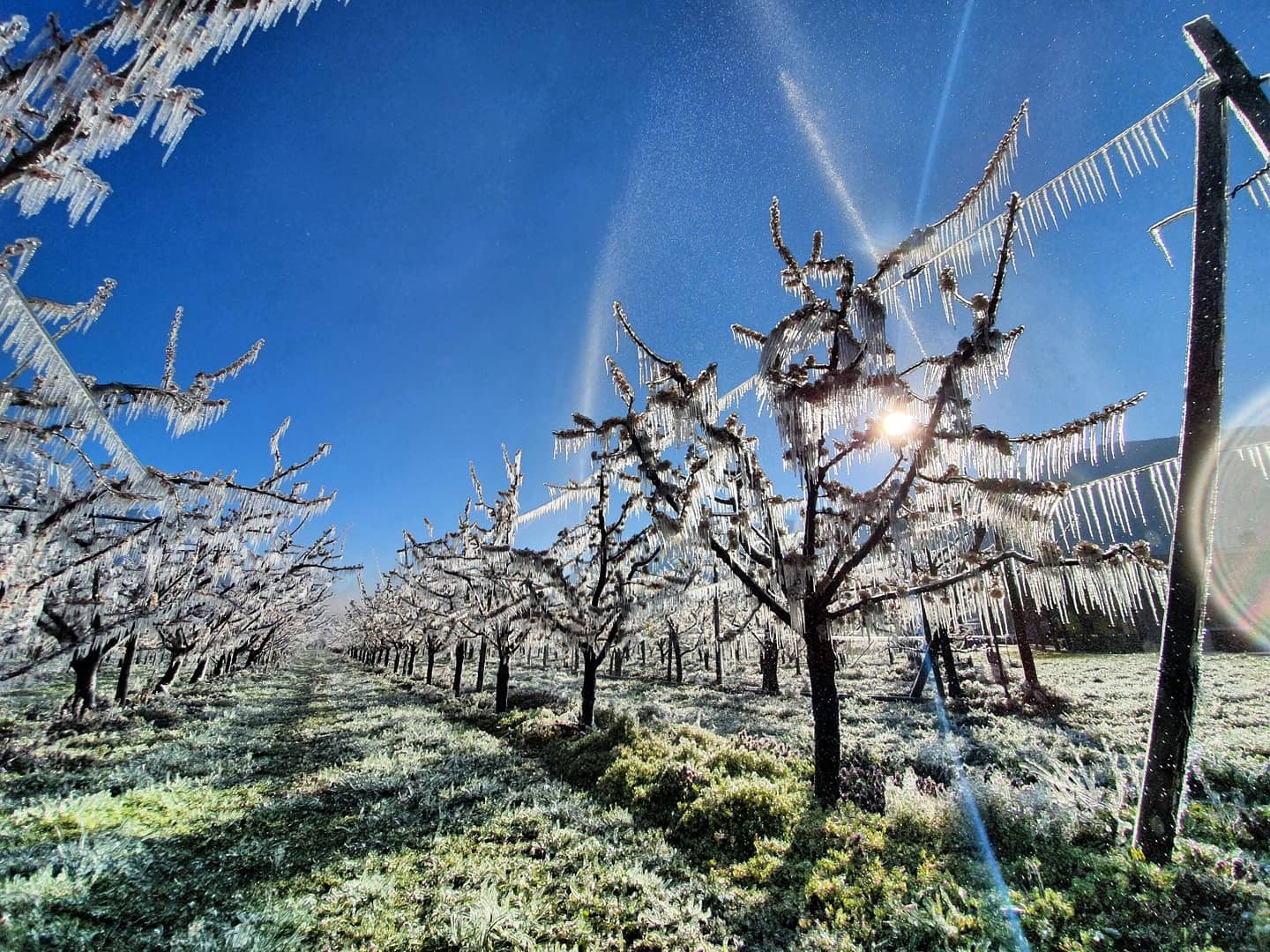It is a widely know fact that water freezes at 0°C. There are of course some exceptions to this rule and by manipulating various physical, chemical, and even biological factors, the freezing point of water can change. This phenomenon takes place for example in the southern oceans. The presence of salt in the water allows it to stay liquid, even at 1.9°C below zero [1]. Only a few organisms can survive in these extreme conditions.

Endothermic animals are capable of generating their own body heat and have developed various ways to minimize heat loss. Polar Bears, for example, have black skin to absorb the heat of the sun and a thick layer of blubber that keeps them warm in the cold water when they swim. Fishes are ectothermic or cold-blooded animals, which means they regulate their body temperatures with the help of the external environment. This is why you can see lizards, which are also ectothermic animals, basking in the sun on rocks when the weather is warmer. Their body temperature changes with the temperature of the environment. This can become quite a challenge for fishes that live in these icy seawaters. There aren’t many types of Antarctic fishes, but those that exist are well adapted to the cold temperatures. Some avoid freezing by living in deeper waters in a supercooled state to avoid any contact with ice crystals. If no ice crystals are ingested, none can grow in their bodies and the fishes can avoid freezing that way. Others live in shallower waters and have therefore different adaptations to prevent their bodies from freezing [2]. One of the mechanisms they have evolved is the production of biological antifreeze proteins. These proteins can bind to and inhibit the growth of ice crystals in the blood to prevent the fish from freezing [3].

Credit: Paul A. Cziko, University of Oregon (HTTPS://WWW.NSF.GOV/NEWS/NEWS_SUMM.JSP?ORG=NSF&CNTN_ID=132798&PREVIEW=FALSE)
The first antifreeze proteins (AFPs) in polar fishes were discovered by Professor Arthur DeVries of the University of Illinois in the late 1960s. While working at McMurdo Station, he “enjoyed the combination of rigorous field work (catching the fish) and laboratory work in this remote location” in Antarctica [2].
Ever since then, many more AFPs have been discovered in cold surviving organisms across several biological kingdoms. They exist in fishes, insects, plants, and even bacteria where they inhibit ice crystal growth and recrystallization by adsorbing or binding to the ice surface. This prevents cell injury and death caused by ice crystals inside the body.

Plant tissues can also get damaged by the formation of ice crystals at subzero temperatures. Ice-binding proteins (IBPs) in plants allow them to become freeze-tolerant, but they work slightly differently from the AFPs found in Antarctic fishes for example. Instead of lowering the freezing temperature, IBPs in plants focus their activity more on inhibiting the recrystallization of already formed ice. They prevent “the growth of large ice crystals at the expense of small ones” [4] at temperatures that are close to the melting temperature.

There are many other antifreeze materials that exist, such as ethylene glycol, which is used as a cryoprotectant to preserve biological tissues and organs, but also as an antifreeze in car engines [5]. However, the latter becomes toxic when decomposed in the body. Since antifreeze proteins are obtained from natural organisms, they have no or very low toxicity and can be widely applied.
As previously mentioned, cryoprotectants are usually used in cell, tissue, and organ cryopreservation methods. High concentrations of these compounds are necessary to minimize the formation of ice crystals, but this can lead to cytotoxicity. AFPs are therefore a great alternative since they inhibit ice growth at relatively low concentrations and are considered less toxic [6].
Antifreeze proteins are also used in the food industry. They can be applied for example to control ice crystal growth in ice cream which leads to a much smoother texture [7]. Lastly, it is also possible to create transgenic plants by introducing genes that code for AFPs into their genome. This improves freeze tolerance in otherwise cold-sensitive organisms [6].

This last property seemed particularly interesting to the iGEM team UNILausanne 2021. Earlier this year, we noticed that many articles talked about how the late spring freeze in Switzerland has affected the crops. It has led for example to the loss of more than two thirds of this year’s apricot production [8]. Since then, our team has spent many hours brainstorming and talking to experts in the field to find a way to solve this problem. When we heard about antifreeze proteins, we immediately thought of various ways to apply them to this project.
In Switzerland, a moratorium on the use of genetically modified organisms in agriculture makes the cultivation of genetically engineered plants illegal. So instead of creating transgenic plants that overexpress AFPs themselves, we thought of producing these proteins using bacteria, and spraying the purified product on the crops to protect them from the ice crystals that form during the late spring freeze.
Our team has also thought of other ways to protect plants all over the world from the late spring freeze. If this sounds interesting, you can check out the previously published post about tailocins for example!
References
- https://www.polartrec.com/resources/lesson/frozen-fish-unique-adaptations-of-antarctic-fish
- https://www.scientia.global/professor-arthur-devries-cold-ice-antifreeze-proteins-polar-fishes/
- https://www.nsf.gov/news/news_summ.jsp?cntn_id=132798
- https://www.intechopen.com/chapters/42487
- https://en.wikipedia.org/wiki/Ethylene_glycol
- https://link.springer.com/article/10.1007/s13205-019-1861-y
- https://pubmed.ncbi.nlm.nih.gov/16357267/
- https://www.rts.ch/info/regions/valais/12138006-plus-des-deux-tiers-des-abricots-valaisans-sont-perdus-en-raison-du-gel.html

